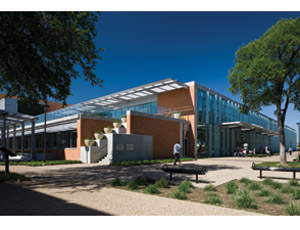Texas 2010 design rank: No 27
Green rank: No. 3
Perkins+Will of Dallas was an early leader in sustainable design. “We have been on the forefront of sustainable design, and approach each project the same, regardless if the client wishes to pursue certification,” says Sean Garman, LEED AP BD+C, associate with Perkins+Will, which was founded in 1935 in Chicago. “[Our green market] continues to grow. Almost half our projects are pursuing certification.”

The firm designed the $42-million Richland College Sabine Hall Science Building in Dallas, tracking for LEED-platinum. It designed the $117-million Baylor University Medical Center Baylor Charles A. Sammons Cancer Center in Dallas.
Garman says there is an increased interest in carbon neutrality and moving beyond LEED, such as the Living Building Challenge, an advanced certification program from the International Living Building Institute in Seattle.
“People are becoming more aware that their buildings impact greenhouse gas emissions and the resulting ‘carbon footprint,’” Garman adds. “We are engaged in a few projects pursuing the Living Building Challenge, not just sustainable but regenerative buildings, net-energy producers, net-water producers. We encourage growth integrated within the ecosystem.”
Perkins+Will compiled a list of the top 25 known carcinogens/substances harmful to humans, animals or the environment. It is avoiding such products and the list is on its website. It also developed a 2030 Energy Challenge Energy Estimating Tool, in association with Ed Mazria of the nonprofit Architecture 2030, to help set and monitor energy goals for each project.
div id="articleExtras"
Post a comment to this article
Report Abusive Comment